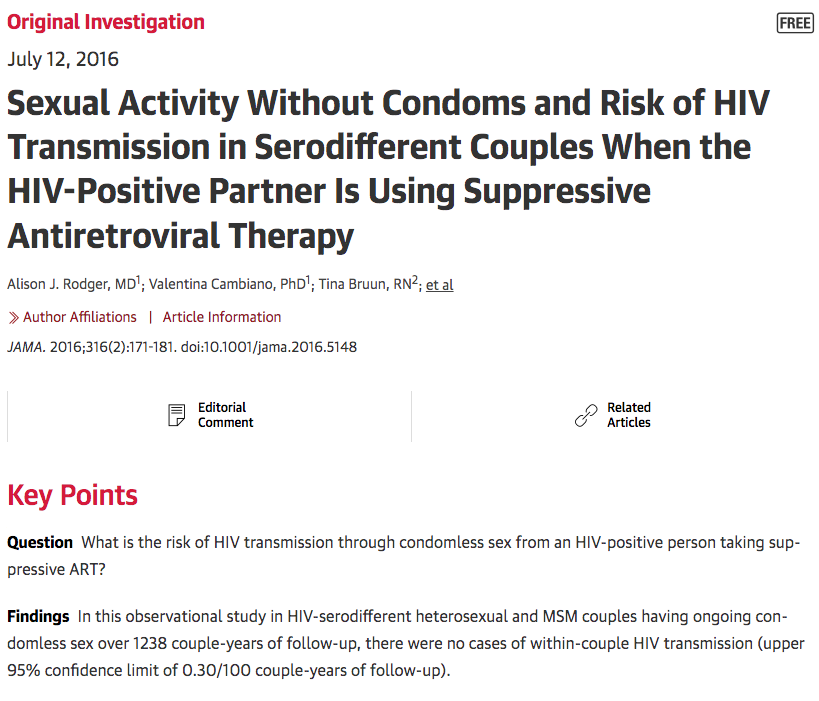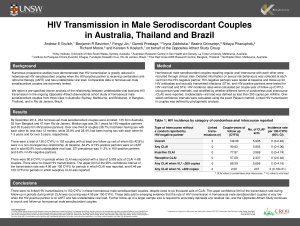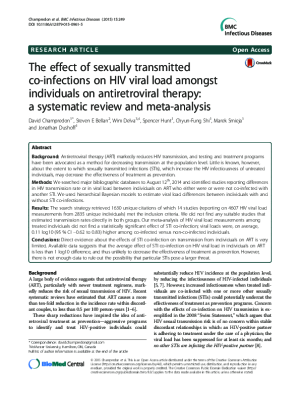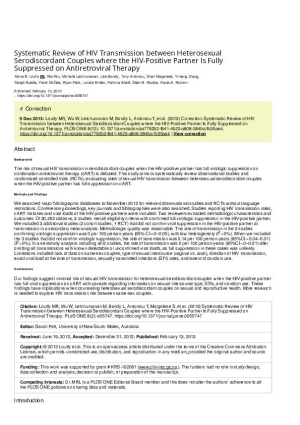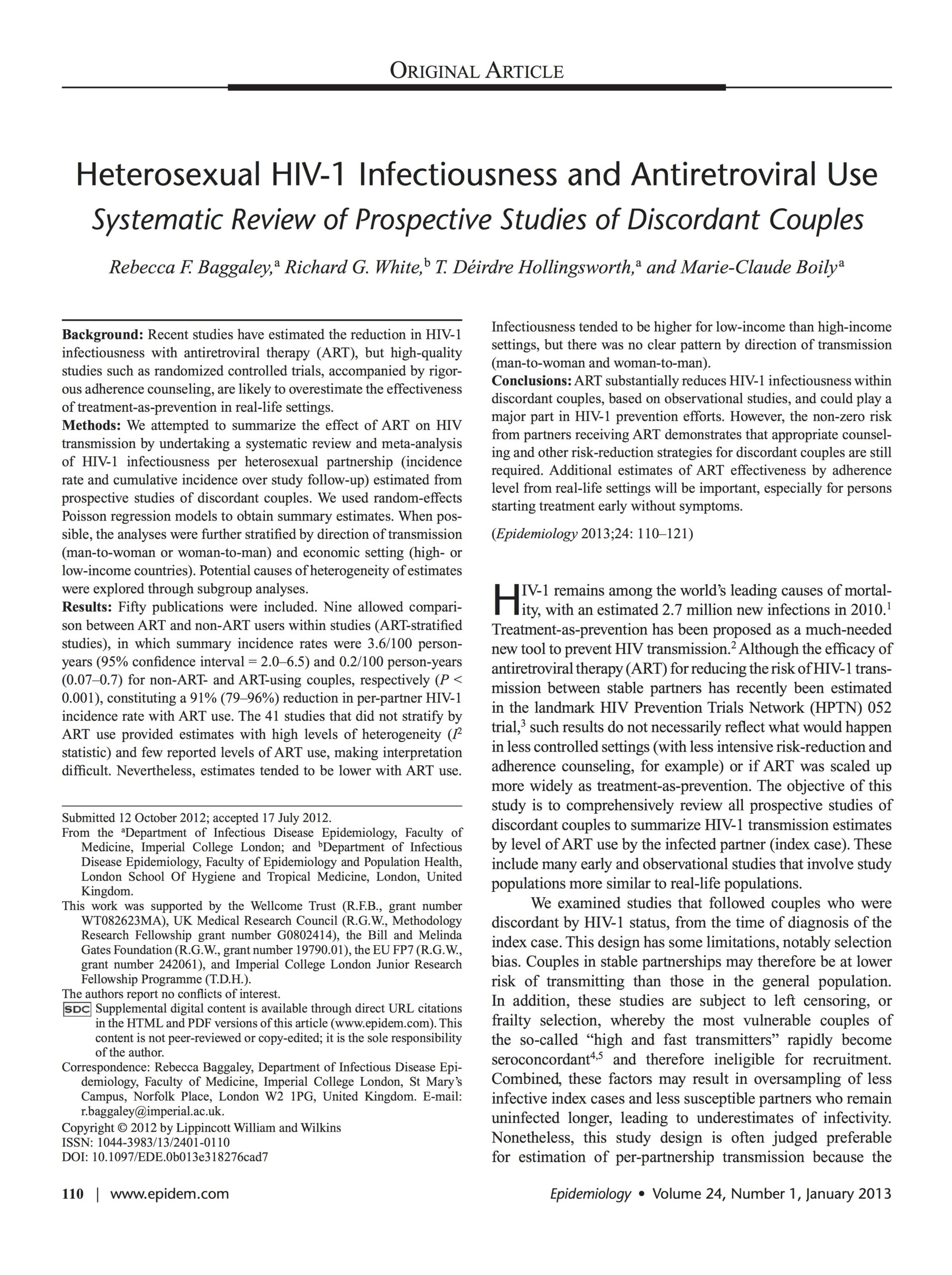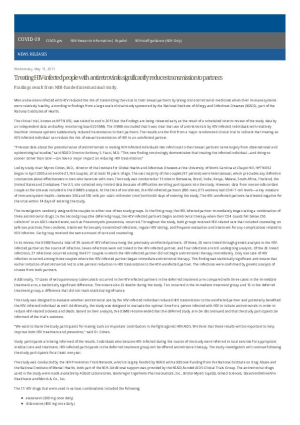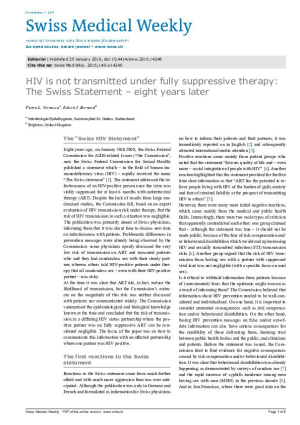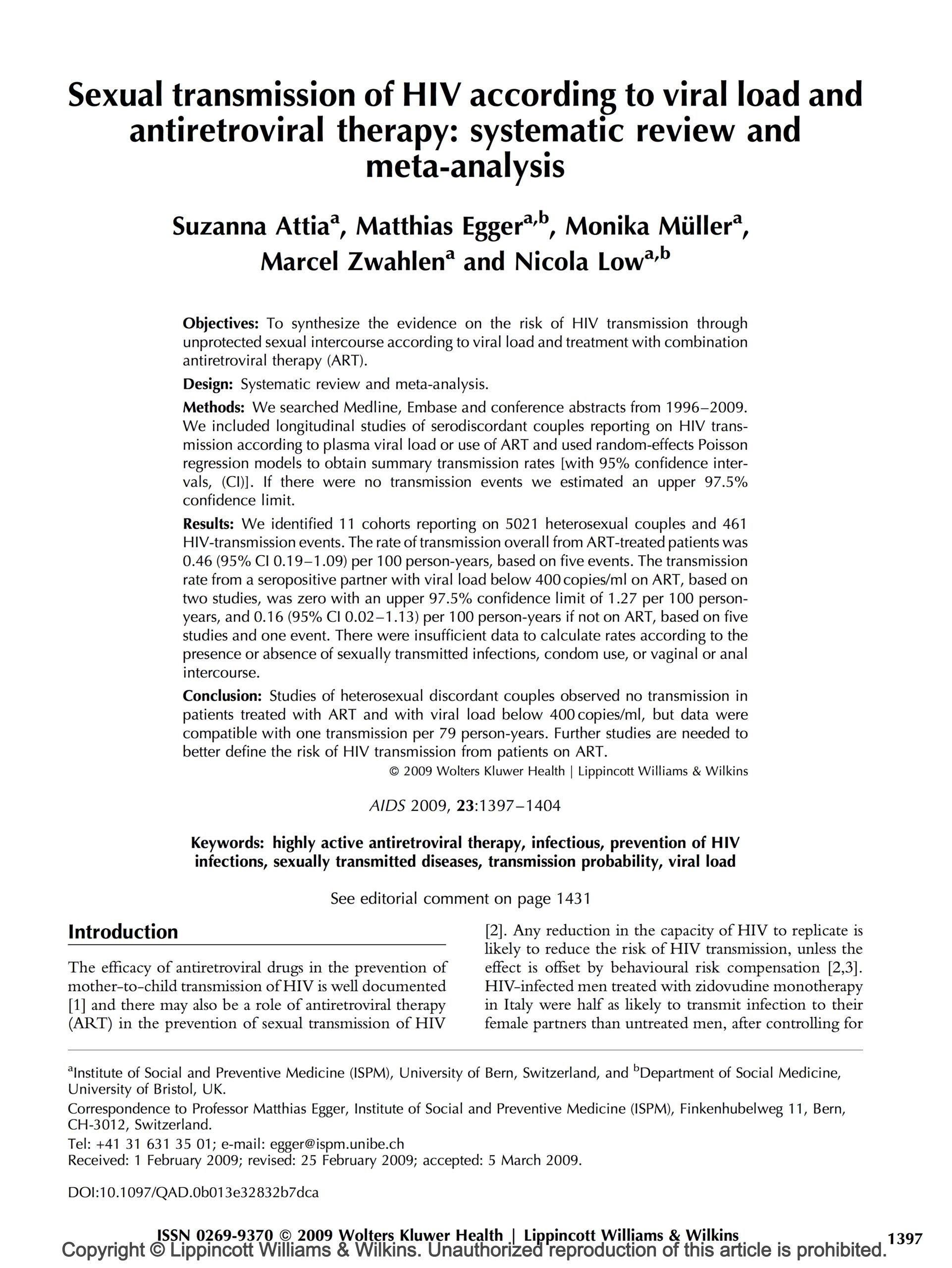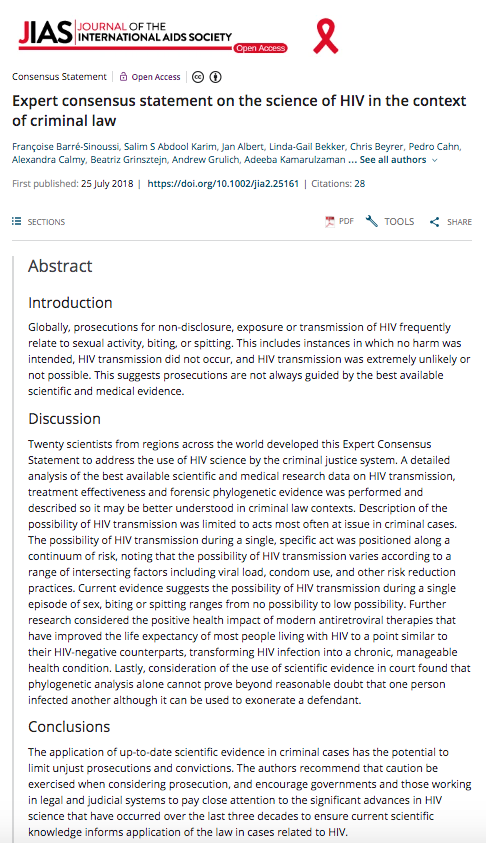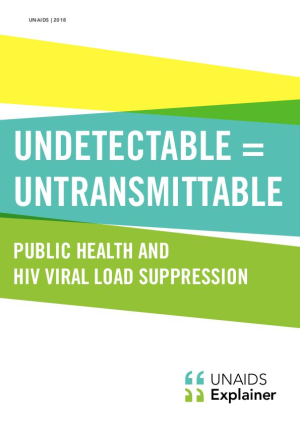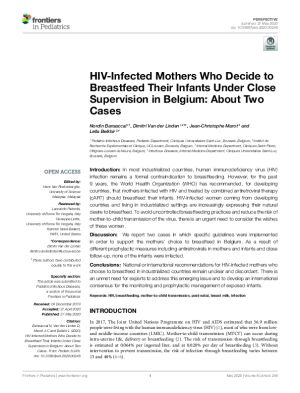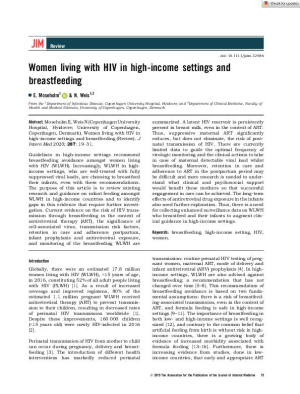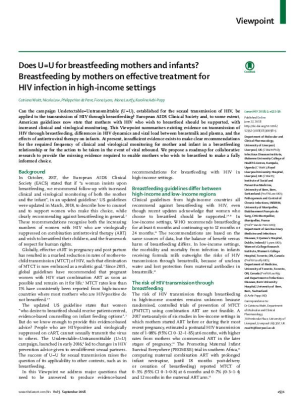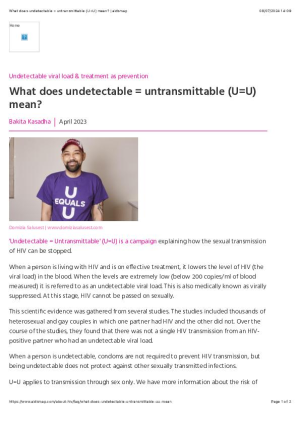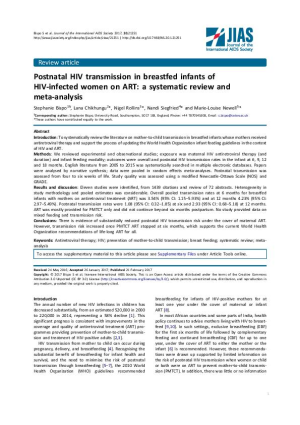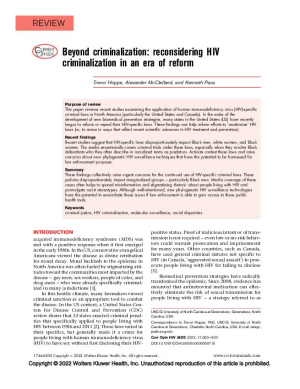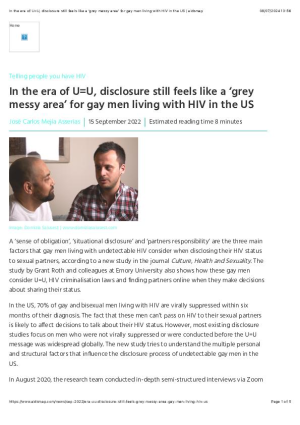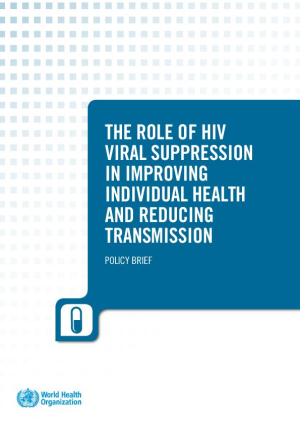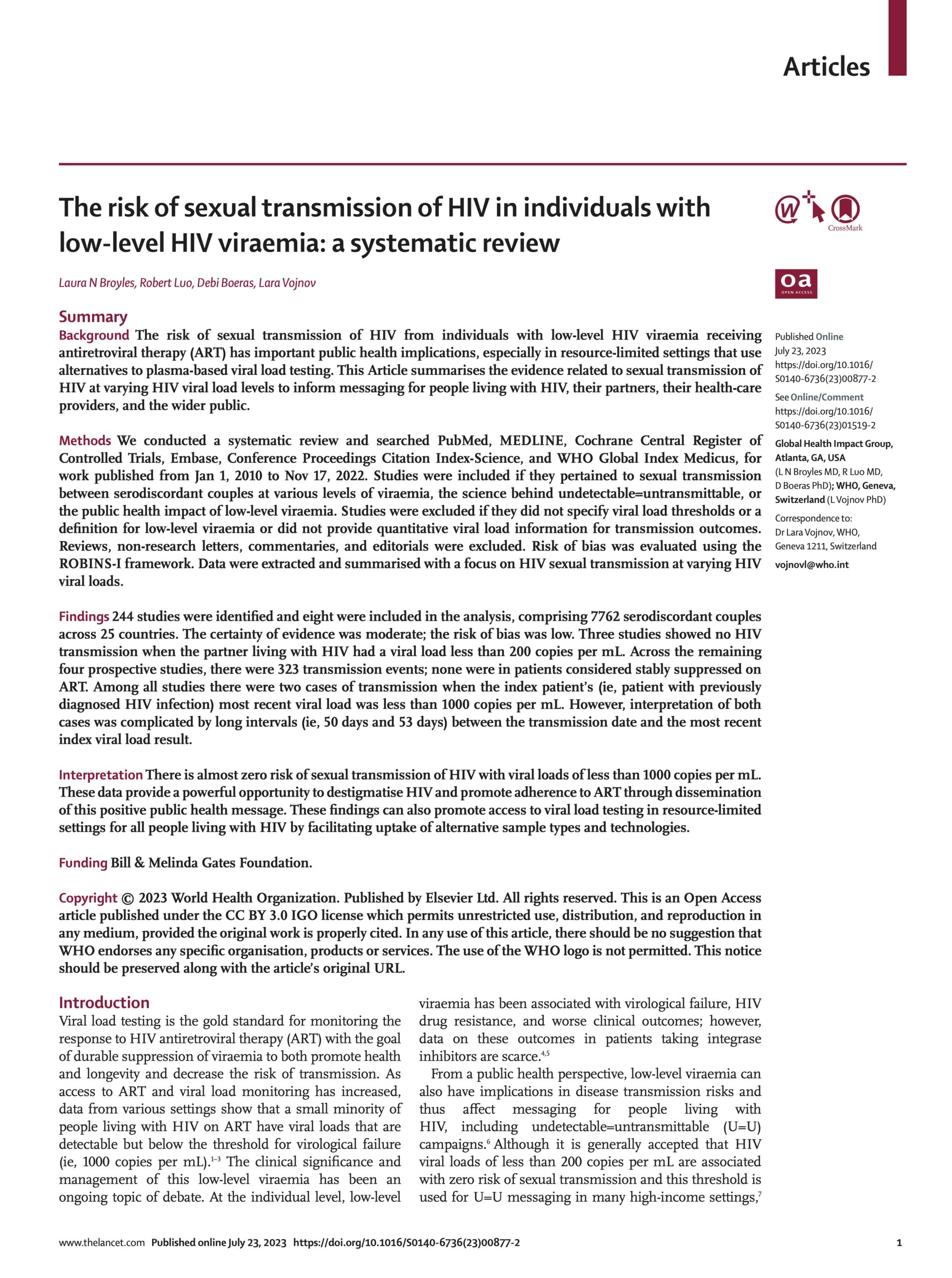Reports findings of European prospective, observational (PARTNER) study to evaluate the rate of within-couple HIV transmission (heterosexual and men who have sex with men) during periods of sex without condoms when the HIV-positive partner had HIV-1 RNA load less than 200 copies/mL. Found no transmission after 1.3 years.
Scientific evidence in a legal context
Treatment as prevention/U=U
HIV Transmission in Male Serodiscordant Couples in Australia, Thailand and Brazil
Reports an interim analysis of the relationship between undetectable viral load and HIV transmission in the Opposites Attract observational cohort study of homosexual male serodiscordant couples in Australia. Finds no linked HIV transmissions in 150 ‘couple years of follow up’ among homosexual male serodiscordant couples, despite close to six thousand acts of condomless anal sex.
The effect of sexually transmitted co-infections on HIV viral load amongst individuals on antiretroviral therapy: a systematic review and meta-analysis
Analyses 14 studies to find evidence about the effects of STI co-infection on transmission from individuals on ART is very limited. Available data suggests the average effect of STI co-infection on HIV viral load in individuals on ART is unlikely to decrease the effectiveness of treatment as prevention. However, limited data precluded ruling out the possibility that particular STIs pose a larger threat.
Systematic Review of HIV Transmission between Heterosexual Serodiscordant Couples where the HIV-Positive Partner Is Fully Suppressed on Antiretroviral Therapy
Meta-analysis suggests minimal risk of sexual HIV transmission for heterosexual serodiscordant couples when the HIV-positive partner has full viral suppression on cART with caveats regarding information on sexual intercourse type, STIs, and condom use.
Heterosexual HIV-1 infectiousness and antiretroviral use: systematic review of prospective studies of discordant couples
Systemic review and meta-analysis of 50 studies considered HIV transmission risk between heterosexual partners. Found ART substantially reduces HIV infection risk within serodiscordant couples.
Prevention of HIV-1 Infection with Early Antiretroviral Therapy
Reports findings of OPTN 052 study based in nine countries, which found early initiation of antiretroviral therapy reduced rates of sexual transmission of HIV-1 and clinical events, indicating both personal and public health benefits from such therapy.
Treating HIV-infected people with antiretrovirals significantly reduces transmission to partners: Findings result from NIH-funded international study
Describes findings of the HPTN 052 study: that early initiation of antiretroviral therapy reduced rates of sexual transmission of HIV-1 and clinical events, indicating both personal and public health benefits from such therapy.
HIV-positive individuals not suffering from any other STD and adhering to an effective antiretroviral treatment do not transmit HIV sexually. [The Swiss Statement]
Review of existing studies to show that a person with HIV who has no other sexually transmissible infection, has adhered to antiretroviral therapy (ART) for at least 6 months to achieve completely suppressed viremia, and is monitored by an attending physician cannot pass on the virus through sexual contact.
- Alternative links
- French / Français, German / Deutsche
HIV is not transmitted under fully suppressive therapy: The Swiss Statement – eight years later
Outlines the background to the Swiss Statement, reactions to the Swiss Statement, and the fact that subsequent research has not undermined its assertions. Includes observations about its legacy, including more honest communication between patients and clinicians, and the development of official guidelines recognising the effectiveness of ART.
Sexual transmission of HIV according to viral load and antiretroviral therapy: systematic review and meta-analysis
Review and meta-analysis of 11 articles found no HIV transmission among heterosexual discordant couples when the positive patient was treated with ART and had a viral load below 400 copies (with data compatible with one transmission per 79 years).
How reliable is an undetectable viral load
Considers the reliability of viral load as a condition preventing HIV transmission. Found reliability is high with compliance taking medication the most important factor predicting reliability.
Expert consensus statement on the science of HIV in the context of criminal law
Twenty scientists from regions across the world developed this Expert Consensus Statement to address the use of HIV science by the criminal justice system. Description of the possibility of HIV transmission was limited to acts most often at issue in criminal cases. The authors recommend that caution be exercised when considering prosecution, and encourage governments and those working in legal and judicial systems to pay close attention to the significant advances in HIV science that have occurred over the last three decades to ensure current scientific knowledge informs application of the law in cases related to HIV.
- Alternative links
- Czech: Expertní prohlášení k vědeckým poznatkům o HIV v kontextu trestního práva , French: Déclaration de consensus d'experts sur la connaissance scientifique relative au VIH dans le contexte du droit pénal, German: Expertenkonsens zur HIV-Wissenschaft im Kontext des Strafrechts, Mandarin: 專家共識聲明:刑法脈絡下的愛滋相關科學, Russian: Заявление об экспертном консенсусе в отношении научных данных о ВИЧ- инфекции в контексте уголовного права , Spanish: Declaración de Consenso de expertos sobre la ciencia relativa al VIH en el contexto del derecho penal
Risk of HIV transmission through condomless sex in serodifferent gay couples with the HIV-positive partner taking suppressive antiretroviral therapy (PARTNER): final results of a multicentre, prospective, observational study
Study findings provide conclusive evidence that the risk of HIV transmission through anal sex when HIV viral load is suppressed is effectively zero.Among the 782 serodifferent gay couples followed for almost 1600 eligible couple-years of follow-up, which included more than 76 000 reports of condomless sex, zero cases of within-couple HIV transmission were found. In the absence of ART, on the basis of the frequency and type of sex, for receptive condomless anal sex acts alone approximately 472 transmissions would have been expected. The results give equivalence of evidence for gay men as for heterosexual couples and indicate that the risk of HIV transmission when HIV viral load is suppressed is effectively zero for both anal and vaginal sex.
Undetectable = untransmittable — Public health and HIV viral load suppression
UNAIDS factsheet explaining how twenty years of evidence demonstrate that HIV treatment is highly effective in reducing the transmission of HIV. People living with HIV on antiretroviral therapy who have an undetectable level of HIV in their blood have a negligible risk of transmitting HIV sexually.
HIV-Infected mothers who decide to breastfeed their infants under close supervision in Belgium: About two cases (2020)
A case report from Belgium in which specific guidelines were implemented in order to support two mothers' choice to breastfeed. As a result of different prophylactic measures including antiretrovirals in mothers and infants and close follow-up, none of the infants were infected.
- Alternative links
- Read on the Frontiers Pediatrics site
Women living with HIV in high-income settings and breastfeeding (2020)
A thorough review of policy guidance, science and practice in high income settings from Denmark. It concludes that "suppressive maternal ART significantly reduces, but does not eliminate, the risk of postnatal transmission of HIV through breastfeeding. However, it is important to recognize and acknowledge that some women living with HIV may wish to breastfeed their infant, in which both the healthcare providers and the women need evidence-based information about the risks and benefits to enable an informed decision."
Does U=U for breastfeeding mothers and infants? Breastfeeding by mothers on effective treatment for HIV infection in high-income settings (2018)
Can the campaign Undetectable=Untransmittable (U=U), established for the sexual transmission of HIV, be applied to the transmission of HIV through breastfeeding? A group of global experts propose a roadmap for collaborative research to provide the missing evidence required to enable mothers who wish to breastfeed to make a fully informed choice.
No HIV transmission from virally suppressed mothers during breastfeeding in rural Tanzania (2018)
Brief report from clinical practice in Tanzania which found no HIV transmission from mothers who were retained in care and had suppressed viral load whilst breastfeeding. They conclude: "Breastfeeding signifies a very low risk when mothers adhere to ART."
What does undetectable = untransmittable (U=U) mean?
Overview of U=U, explaining how effective treatment lowers the level of HIV (the viral load) in the blood to a level where sexual transmission of HIV is no longer possible. When the levels are extremely low (below 200 copies/ml of blood measured) it is referred to as an undetectable viral load. At this stage, HIV cannot be passed on sexually.
Consensus Statement on HIV “Treatment as Prevention” in Criminal Law Reform
The Consensus Statement is a collaborative document that grew out of the recognition of a need for guidance on how the science of HIV treatment and prevention tools relates to the reform of HIV criminal laws.
Postnatal HIV transmission in breastfed infants of HIV-infected women on ART: a systematic review and meta-analysis (2017)
A systematic review of all literature to date (2017) on mother-to-child transmission in breastfed infants whose mothers received antiretroviral therapy and support the process of updating the World Health Organization infant feeding guidelines in the context of HIV and ART, which concludes that there is evidence of substantially reduced postnatal HIV transmission risk under the cover of maternal ART.
- Alternative links
- Read on the JIAS website
Beyond criminalization: reconsidering HIV criminalization in an era of reform
This paper reviews recent studies examining the application of HIV-specific criminal laws in North America (particularly the United States and Canada). In the wake of the development of new biomedical prevention strategies, many states in the United States (US) have recently begun to reform or repeal their HIV-specific laws. These findings can help inform efforts to ‘modernize’ HIV laws (or, to revise in ways that reflect recent scientific advances in HIV treatment and prevention).
In the era of U=U, disclosure still feels like a ‘grey messy area’ for gay men living with HIV in the US
Summary of a study published in June 2022 on the Taylor & Francis Online website. The qualitative study was conducted in August 2020 with extensive interviews via Zoom with twenty HIV-positive gay men on treatment with undetectable viral loads. Participants were from all regions of the United States and ranged in age from 23 to 62.
Role of viral suppression in HIV treatment and prevention and its potential in addressing harmful laws and discrimination
This article documents key moments in research and WHO policies that have informed how ART is applied within HIV programs, including as a prevention tool with the potential to support efforts to address HIV-related discrimination. In 2023, WHO continues to clarify that there is zero risk of sexual HIV transmission when a person living with HIV has an undetectable viral load and an almost zero or negligible risk of sexual transmission when a person living with HIV has a viral load of ≤1000 copies/mL.
The role of HIV viral suppression in improving individual health and reducing transmission
This policy brief describes key HIV viral load thresholds and the available viral load testing approaches for monitoring how well antiretroviral therapy is working for people living with HIV.
Key messages include:
- HIV viral suppression is critical to improve health, prevent sexual transmission, and reduce perinatal transmission.
- There are three key categories for HIV viral load measurements: unsuppressed (>1000 copies/mL), suppressed (detected but ≤1000 copies/mL) and undetectable (viral load not detected by test used).
- People living with HIV who have an undetectable viral load using any WHO-prequalified combination of sample and testing platform, including dried blood spot samples, and continue taking medication as prescribed have zero risk of transmitting HIV to their sexual partner(s).
- People living with HIV who have a suppressed but detectable viral load and are taking medication as prescribed have almost zero or negligible risk of transmitting HIV to their sexual partner(s).
The risk of sexual transmission of HIV in individuals with low-level HIV viraemia: a systematic review
The risk of sexual transmission of HIV from individuals with low-level HIV viraemia receiving antiretroviral therapy (ART) has important public health implications, especially in resource-limited settings that use alternatives to plasma-based viral load testing. This Article summarises the evidence related to sexual transmission of HIV at varying HIV viral load levels to inform messaging for people living with HIV, their partners, their health-care providers, and the wider public.

